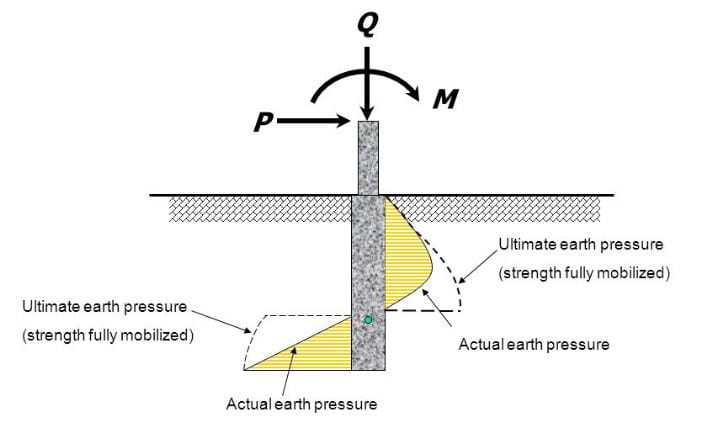Guest090822
Structural
- Jan 18, 2017
- 260
I’m checking a design for Noise Wall. The designer is using a simplified soil pressure distribution, I’ve attached a sketch. The foundations are essentially drilled shafts. The designer did something I’ve never seen before for this type of design. He took the area of the circular shaft, converted it to an “equivalent square” and then determined the embedment by summing the moments about the “toe”. I’ve always just used the center of the shaft and don’t normally account for the self-weight providing any passive resistance. I thought it was pretty practical, but my geotechnical coworkers went nuts over it and said it was too unpredictable to rely on. These shafts are spaced 12’ apart, and there are 200 of them. As a structural guy, I see this wall bending in only two directions (active to passive as shown in the sketch and then reversed if the wind blows in the opposite direction). That seems pretty predictable to me. I’m just curious if anyone else has seen the analysis done this way?

